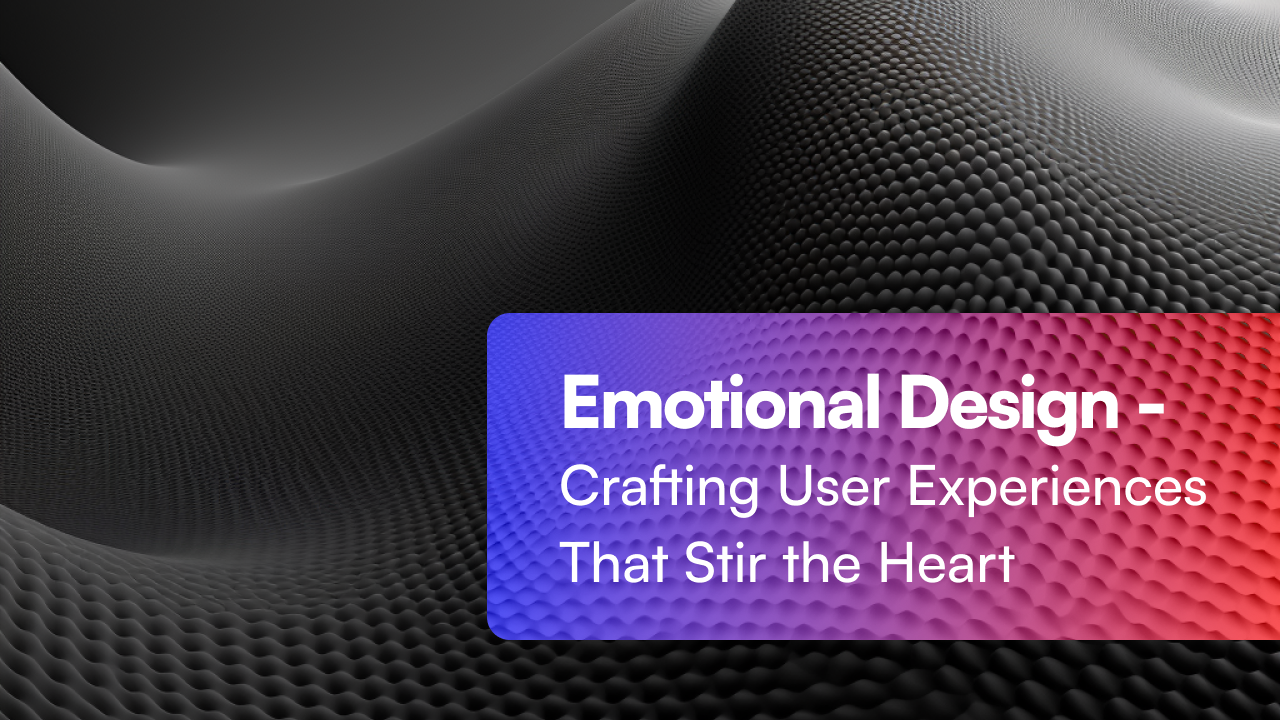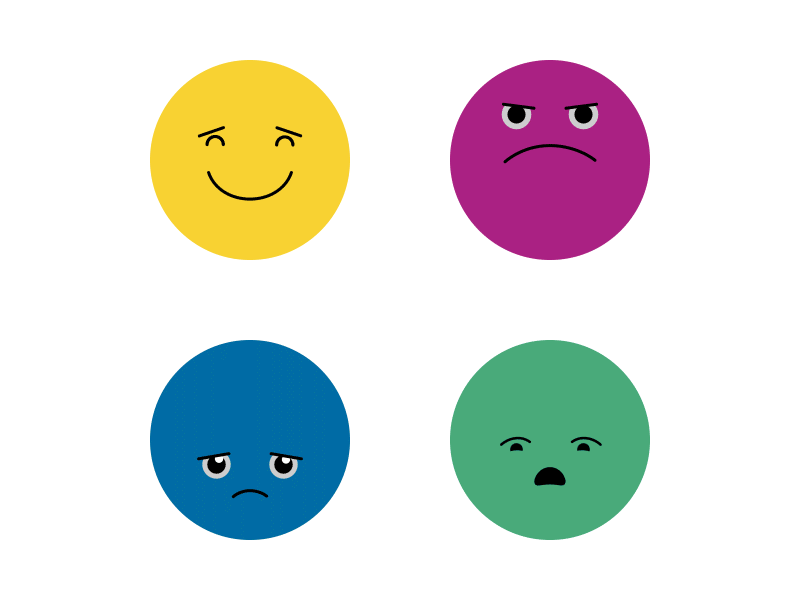Design Psychology
Emotional Design – Crafting User Experiences That Stir the Heart

In the ever-evolving landscape of design, emotional design stands out as a powerful approach that transcends mere aesthetics and functionality. It delves into the realm of human emotions, aiming to create user experiences that resonate deeply, evoke positive feelings, and forge lasting connections. In this blog, we’ll explore the pivotal role of emotions in design, discuss techniques to evoke those emotions and understand how emotional design can enhance brand loyalty.
The Role of Emotions in Design
1. Why Emotions Matter
+ Emotions drive human behavior. When users feel joy, trust, or delight while interacting with a product or service, they are more likely to engage, convert, and remain loyal.
+ Emotional connections foster brand affinity. Think of Apple’s sleek designs evoking desire or Coca-Cola’s nostalgic holiday campaigns stirring warm feelings.
2. The Emotional Design Spectrum
Positive Emotions: These include joy, excitement, trust, and love. Design elements can amplify these feelings.
Negative Emotions: Fear, frustration, and disappointment can arise from poor design choices. Emotional design aims to minimize these.
Techniques for Eliciting Positive Emotions with Emotional Design
1. Visual Storytelling
Illustrate Brand Values
> Use visuals—images, videos, animations—to convey your brand’s core values.
> Show real people using your product/service in relatable scenarios.
User-Centric Imagery
a. Authenticity matters. Showcase diverse users and their experiences.
b. Highlight moments of joy, achievement, or connection.
2. Micro-interactions with Heart

Delightful Animations
1. Microinteractions—those subtle animations—can evoke joy.
2. Think of a heart icon pulsating when liked or a smooth transition between screens.
Feedback with Personality
A. Design micro-interactions that provide feedback in a friendly, human-like manner.
B. A loading spinner that playfully dances or a confirmation message with a smile.
3. Color Psychology
Color Associations
Colors evoke emotions. Leverage color psychology:
Red: Passion, excitement
Blue: Trust, calmness
Green: Freshness, growth
Consistent Color Palette
> Maintain consistency across your brand’s color choices.
> Colors become part of your brand’s emotional identity.
4. Typography and Emotional Tone
Font Selection
– Fonts have personalities too. Choose fonts that align with your brand’s emotional tone.
– A playful script font communicates differently from a sleek sans-serif.
Text Hierarchy
a. Use typography to guide users through content.
b. Headlines, subheadings, and body text should evoke the right emotions.
5. Story-Driven Interfaces
Narrative Flow
1. Design interfaces as a journey. Each screen unfolds like a chapter.
2. Lead users toward their goals, creating emotional engagement.
User Personas
Understand your audience deeply. Craft interfaces that resonate with their aspirations, fears, and desires.
6. Soundscapes and Audio Branding
Custom Sound Effects
A. Add subtle sounds to interactions (e.g., button clicks, notifications).
B. These auditory cues enhance emotional engagement.
Brand Jingles
+ Create short audio snippets that represent your brand.
+ Think of Intel’s iconic jingle.
Enhancing Brand Loyalty Through Emotional Design
1. Authenticity Builds Trust
a. When users feel understood and emotionally connected, trust in your brand grows.
b. Authentic design choices—whether in visuals, micro-interactions, or tone—build credibility.
2. Memorable Experiences Foster Loyalty
a. Emotional moments stick with users. They remember how your product made them feel.
b. Consistently positive experiences lead to brand loyalty.
3. Emotional Bonds Last
a. Surprise and delight users. Personalized interactions create emotional bonds.
b. Remember birthdays, celebrate milestones and show appreciation.
4. Feedback Loop and Listening
a. Actively listen to users. Respond to reviews, and engage on social media. b. Show users that their voices matter by iterating based on insights.

In conclusion, emotional design isn’t about manipulation—it’s about creating authentic, memorable experiences. When users feel valued, understood, and emotionally connected, brand loyalty becomes a natural outcome. So, let your designs stir hearts and leave a lasting impression!
FAQ about Emotional Design in UX
What is emotional design in UX?
Emotional design in UX is the practice of designing user experiences that evoke specific emotions. It goes beyond functionality and aesthetics, aiming to create a connection with users on an emotional level. This can lead to increased engagement, brand loyalty, and positive user memories. Source
What is the role of emotions in user experience?
Emotions play a crucial role in user experience (UX) because they heavily influence our behavior. When users feel positive emotions like joy, trust, or delight while interacting with a product or service, they’re more likely to be engaged, convert, and remain loyal. Similarly, negative emotions like frustration or disappointment can lead to user abandonment. Source
What are the different aspects of emotional design?
The blog post highlights several key aspects of emotional design:
Visual Storytelling: Using visuals (images, videos, animations) that convey brand values and showcase real people using the product in relatable scenarios.
Micro-interactions with Heart: Designing delightful animations, feedback with personality, and subtle auditory cues to enhance user experience.
Color Psychology: Leveraging the emotional associations of colors to create a consistent brand palette that resonates with your target audience.
Typography and Emotional Tone: Selecting fonts that align with your brand’s personality and using text hierarchy to guide users through content and evoke the right emotions.
Story-Driven Interfaces: Designing interfaces as a narrative journey, leading users towards their goals, and creating emotional engagement through user personas that resonate with their aspirations.Soundscapes and Audio Branding: Incorporating subtle sound effects and brand jingles to enhance emotional connection.
Read More like Emotional Design:
Learn the science of making appealing promises and the art of delivering them. Understand the relation between rational & emotional branding.





